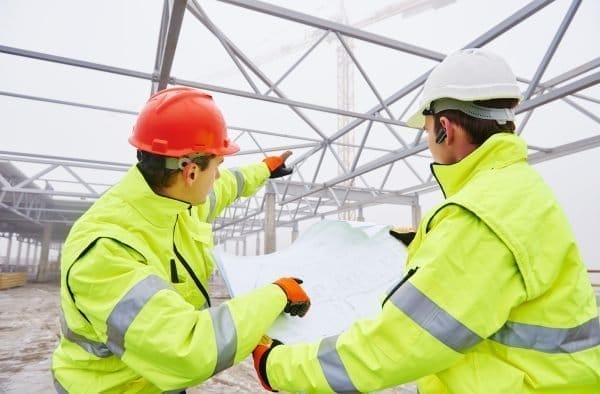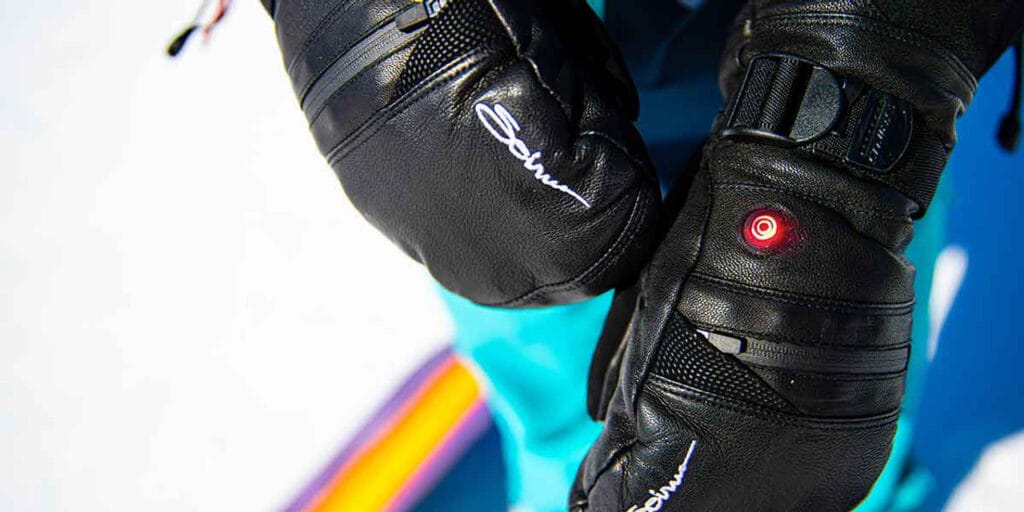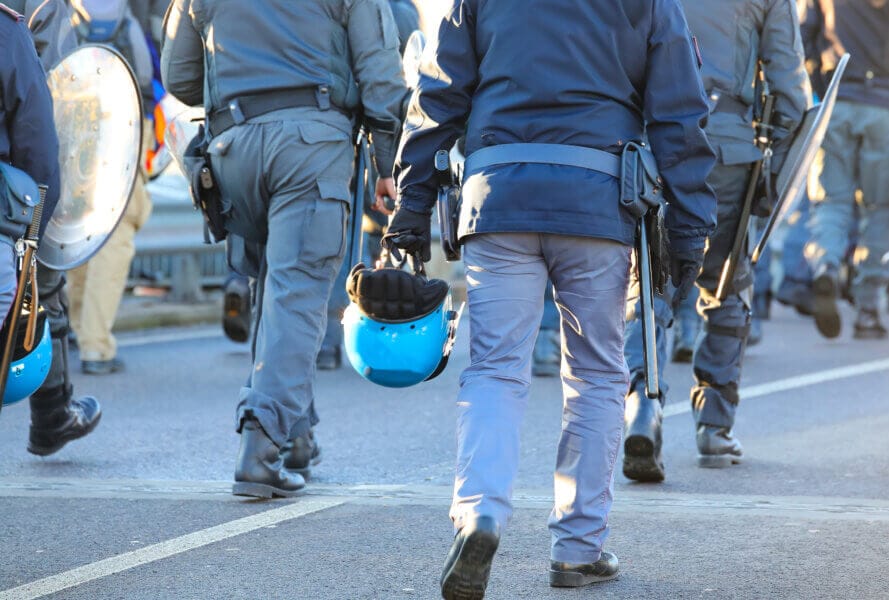
From underground mines in Kazakhstan to oil rigs off the coast of Brazil, and from construction mega-projects in Dubai to private security patrols in Latin America, workers face extreme physical risks every single day. Falling rocks, sharp rebar, heavy tools, industrial machinery, and even ballistic threats in some regions put lives on the line.
For decades, the standard answer was heavy steel plates, thick padding, and bulky helmets. While effective, this gear often left workers exhausted, overheated, and slowed down. Today, however, lightweight armor and impact-resistant workwear are rewriting the rules. By combining advanced fibers like Kevlar and Dyneema with composite panels and ergonomic design, PPE makers can now offer high levels of protection without sacrificing comfort or productivity.
This article explores:
- Why high-risk industries demand lighter but tougher protective gear
- How new materials are replacing steel and leather
- Case studies from Central Asian mining, African construction, Middle Eastern oil & gas, and Latin American security
- The real cost-benefit analysis of lightweight vs traditional armor
- A buyer’s guide to standards, certifications, and procurement strategies
Google Snippet: Quick Answer
Lightweight armor and impact-resistant workwear are essential in mining, oil & gas, construction, and security industries where workers face blunt force, cuts, and ballistic threats. Modern solutions use Kevlar, Dyneema, and composite materials, which are up to 40% lighter than steel while providing equal or higher protection. Buyers should evaluate certifications (EN 388, EN 1621, NIJ), durability in local environments, and worker comfort before procurement.
Why High-Risk Industries Need Lightweight Protection
Heavy-duty work comes with heavy-duty risks. The ILO consistently ranks mining, construction, and oil & gas among the world’s most dangerous industries. Let’s break down why lightweight yet durable protective gear is critical:
-
Mining (Central Asia, Africa, Latin America)
Workers face falling rocks, cave-ins, and heavy machinery collisions. Traditional steel chest protectors and helmets are strong but restrict mobility in tunnels where workers crawl or climb. Lightweight composite protection allows miners to move faster and reduces fatigue during 10–12 hour shifts. -
Construction (Middle East & Africa)
Workers are exposed to falling tools, sharp rebar, and heavy loads. Steel-capped vests and gloves are protective but unbearable in 40°C desert heat. Lightweight Kevlar gloves and ventilated impact vests provide the same safety without heat stress. -
Oil & Gas (Middle East, Nigeria, Brazil)
Flame hazards, falling pipe segments, and high-pressure equipment failures are common. In these settings, PPE must be both flame-resistant and impact-resistant. Kevlar and aramid blends outperform cotton or leather, while Dyneema composites withstand cuts from steel cables and drilling equipment. -
Private Security & Law Enforcement (Latin America, North Africa)
In high-crime regions, guards face not just blunt force but ballistic risks. Kevlar and Dyneema are widely used in bullet-resistant vests, but now being adapted for dual-use workwear—allowing workers to blend protection with normal uniforms. -
Worker Fatigue & Productivity
Heavy armor can add 5–8 kg to a worker’s load. Studies show productivity can drop 20% or more when workers overheat or tire under heavy gear. Lightweight materials reduce weight by up to 40%, improving both safety and efficiency.
Material Innovations Driving Lightweight Protection
Modern impact-resistant workwear relies on high-performance fibers and composites. Here’s what buyers need to know:
1. Kevlar (Aramid Fibers)
- Developed by DuPont, used in aerospace and military armor.
- 5x stronger than steel by weight.
- Heat-resistant, making it ideal for welding, mining, and oil & gas.
- Common in cut-resistant gloves, reinforced jackets, and ballistic vests.
- Limitation: Can degrade under UV light and moisture, so proper coating is needed.
2. Dyneema (Ultra-High Molecular Weight Polyethylene, UHMWPE)
- Marketed as the world’s strongest fiber.
- Extremely lightweight: up to 40% lighter than Kevlar for the same strength.
- Resistant to chemicals, abrasion, and moisture.
- Common in helmets, chainsaw-resistant pants, and stab-resistant vests.
- Limitation: Melts at lower temperatures (not suitable for high-flame environments).
3. Composite Plates
- Combine ceramic tiles, resin layers, and fiber reinforcements.
- Offer targeted protection (chest, shins, shoulders) while keeping the rest of the garment flexible.
- Increasingly popular in mining vests and construction harnesses.
4. Advanced Coatings
- Nano-ceramic coatings for impact dispersion.
- TPU and PU laminates for waterproof yet breathable protection.
- Add-ons like anti-static and flame-retardant finishes make them multi-functional.
5. Hybrid Fabrics
- Mix of Kevlar + Cotton for comfort.
- Dyneema + Polyester for cut resistance and breathability.
- Designed for specific industries: e.g., Kevlar blends in oil & gas, Dyneema blends in forestry.
✅ Pro Tip: When sourcing, don’t just ask for “Kevlar gloves.” Verify fiber percentages, weave type, and coating—they determine real-world performance.
Real-World Accident Cases
Case #1 – Mining Collapse, Kyrgyzstan (2021)
Miners were wearing standard steel chest protectors that weighed over 5 kg each. During a collapse, several workers struggled to escape narrow tunnels because of restricted movement.
Lesson: Post-incident, the company tested Kevlar composite vests, reducing weight by 40%. Workers reported improved agility, and evacuation drills showed escape times were reduced by nearly 30%.
Case #2 – Construction Site, Dubai (2022)
A worker carrying rebar was struck by a falling wrench from the 10th floor. His lightweight Kevlar-lined helmet absorbed the impact, preventing a serious head injury. A colleague with a traditional plastic hardhat sustained a concussion in a similar accident.
Takeaway: Advanced materials not only protect better but also meet stricter compliance demanded by international contractors.
Case #3 – Oil Rig, Brazil (2020)
A drilling pipe slipped and crushed a worker’s boot. Traditional steel-toe boots prevented fractures but left the worker with severe bruising and lost workdays. Later, the operator introduced Dyneema-reinforced impact boots with energy-dispersing soles, which significantly reduced injury severity in follow-up incidents.
Case #4 – Private Security, Mexico City (2019)
Guards at a logistics hub faced frequent assaults. Instead of military-style ballistic vests, which made them stand out and created tension, they adopted Dyneema-lined polo shirts and jackets. These offered discreet ballistic resistance while maintaining a professional corporate look.
Result: Worker compliance improved, and client confidence increased.
PPE Standards & Certifications for Impact-Resistant Workwear
When buying or distributing lightweight armor, certifications are non-negotiable. Unlike regular workwear, armor and impact gear must comply with both industrial safety standards and, in some cases, ballistic standards. Here’s a quick breakdown:
| Standard | Scope | Applies To |
|---|---|---|
| EN 388 (Europe) | Cut, abrasion, tear, puncture resistance | Gloves, arm guards, protective sleeves |
| EN 1621 (Europe) | Impact protectors for motorcycle/industrial use | Shoulder pads, chest protectors |
| EN ISO 20345 | Safety footwear impact resistance | Steel/composite toe boots, midsole plates |
| ANSI/ISEA 105 (US) | Hand protection cut/impact levels | Gloves, sleeves |
| ANSI/ASTM F2413 | Footwear impact and compression | Boots, metatarsal guards |
| NIJ 0101.06/07 | Ballistic resistance for body armor | Security vests, covert armor workwear |
✅ Tip for buyers: In emerging markets (Africa, Latin America, Central Asia), counterfeit certificates are common. Always request a test report from a third-party lab (SGS, Intertek, TUV) instead of only relying on printed certificates.
More Real-World Accident Cases
Case #5 – Quarry in South Africa (2021)
Workers were wearing leather gloves while handling sharp rock slabs. Multiple lacerations led to downtime and medical costs.
Fix: The quarry switched to Kevlar-reinforced gloves (EN 388: Cut Level F). Injury rates dropped by 70%, and glove lifespan doubled compared to leather.
Case #6 – Oil Refinery in Saudi Arabia (2022)
A falling valve cover (approx. 5 kg) struck a worker’s shoulder. The worker was wearing a traditional cotton uniform, leading to dislocation and 3 months of lost work.
Solution: The contractor introduced impact-dispersing shoulder pads integrated into coveralls (EN 1621 certified). After rollout, near-miss incidents caused far less downtime.
Case #7 – Security Guard in Colombia (2020)
Guards at a mining facility were targeted by armed robbers. Standard vests were too bulky, leading many guards to “forget” to wear them.
Adjustment: Dyneema-blended soft armor panels were integrated into lightweight uniforms. Compliance jumped above 90%, and management reported improved morale.
Case #8 – Construction in Egypt (2021)
Workers using rebar cutters suffered repeated foot injuries from heavy steel bars. Steel-toe boots prevented fractures but caused extreme fatigue in desert heat.
Upgrade: Composite-toe boots with Kevlar midsoles reduced weight by 30% while maintaining EN ISO 20345 protection. Workers reported higher comfort and productivity.
Cost vs. Traditional Heavy Protection
One of the biggest barriers in emerging markets is price sensitivity. Heavy steel armor is cheap, but long-term costs tell a different story.
| Factor | Traditional Steel/Leather | Lightweight Kevlar/Dyneema/Composite |
|---|---|---|
| Unit Cost (avg.) | $20–50 (boots), $40–80 (vest) | $50–120 (boots), $100–250 (vest) |
| Weight | High (boots 2–3 kg, vests 5–8 kg) | 30–50% lighter |
| Worker Fatigue | Very high → reduced productivity | Lower fatigue → higher output |
| Lifespan | 3–6 months (prone to corrosion) | 9–18 months (abrasion/chemical resistant) |
| Compliance | Often fails modern standards | Meets EN/ANSI/NIJ certifications |
| Total Annual Cost | High (frequent replacement, injuries) | Lower (fewer replacements, fewer accidents) |
✅ Buyer Insight: While upfront costs are higher, ROI is achieved within 6–12 months due to fewer injuries, lower insurance premiums, and longer product lifespan. For distributors, pitching this ROI helps win contracts with international contractors.
Industry Applications & Regional Differences
-
Mining (Central Asia & Africa)
- Needs: Impact resistance, cut resistance, mobility in confined spaces.
- Preferred materials: Kevlar composites, Dyneema gloves.
- Case: In Kyrgyzstan mines, switching from steel armor to Kevlar reduced evacuation drill times.
-
Oil & Gas (Middle East & Brazil)
- Needs: Flame + impact resistance.
- Preferred materials: Aramid blends with flame-retardant coatings.
- Case: Saudi refinery shoulder pad adoption prevented downtime.
-
Construction (Africa & Middle East)
- Needs: Lightweight boots, helmets, and gloves for hot climates.
- Preferred materials: Composite-toe boots, ventilated Kevlar vests.
- Case: Egypt rebar workers adopted composite boots for heat comfort.
-
Private Security (Latin America & North Africa)
- Needs: Discreet ballistic protection + professional look.
- Preferred materials: Dyneema panels integrated in uniforms.
- Case: Colombia guards compliance rose after adopting covert armor shirts.
Buyer’s Practical Guide: How to Judge Protection Levels
When sourcing lightweight armor and impact-resistant workwear, buyers often face confusing technical terms. Here’s a practical checklist to simplify decisions:
1. Gloves
- Look for EN 388 Cut Level (A–F, with F being strongest).
- Check if palm reinforcement is Kevlar/Dyneema-coated.
- Ask for abrasion test results (Martindale cycles).
2. Boots
- Verify EN ISO 20345 certification.
- Prefer composite toes (lighter, non-metallic) over steel.
- Check midsole material: Kevlar plates protect against nails/rebar.
3. Vests & Armor
- For security: request NIJ level certification (Level II for handguns, Level IIIA for higher threats).
- For construction/mining: ensure impact dispersion padding with EN 1621 approval.
- Inspect stitching: double or triple-stitched seams resist tearing.
4. Helmets & Headgear
- Look for EN 397 (industrial helmets) or NIJ IIIA (ballistic).
- Lightweight polycarbonate/aramid blends reduce neck fatigue.
✅ Checklist Before Placing Orders
- [ ] Third-party test report (SGS, TUV, Intertek)
- [ ] Compliance with EN/ANSI/NIJ standards
- [ ] Samples tested under real job-site conditions
- [ ] Supplier audited for ISO 9001 quality management
- [ ] Contract clauses on warranty & replacements
ROI & Market Opportunities
Many buyers hesitate due to higher upfront cost, but here’s the business math:
| Scenario | Without Lightweight Protection | With Lightweight Protection | Annual Savings |
|---|---|---|---|
| Worker downtime after hand injury | $3,000 (avg. medical + absence) | $300 (preventive PPE cost) | $2,700 |
| Boot replacement (cheap PVC boots) | $40 x 6 times = $240/year | $90 x 2 times = $180/year | $60 |
| Security vest non-compliance | Guards not wearing bulky armor → theft/loss $50,000 | 95% compliance with lightweight vests | $50,000+ |
For distributors in Africa, Central Asia, and Latin America, lightweight armor is a differentiator:
- Wins contracts with multinational contractors (who demand EN/ANSI/NIJ certifications).
- Builds long-term trust with local clients by reducing accident claims.
- Opens doors to higher-margin segments (oil & gas, mining, security).
Buyer FAQ
Q1: Is Kevlar always better than steel?
A: Not always. Kevlar is lighter and flexible, but steel may still be preferred for low-cost, low-risk tasks. For high-risk industries, Kevlar/Dyneema composites win on ROI.
Q2: Do lightweight boots really last longer?
A: Yes. Composite-toe + Kevlar midsole boots typically last 9–12 months, compared to 3–6 months for steel/PVC boots in harsh sites.
Q3: How can I trust certificates from suppliers?
A: Always request a test report directly from the lab (SGS, TUV, Intertek). If the supplier hesitates, it’s a red flag.
Q4: Are these products accepted in African and Latin American markets?
A: Yes. In fact, international contractors demand them. The challenge is educating local buyers about long-term cost savings.
Conclusion
Lightweight armor and impact-resistant workwear are no longer luxury items—they’re becoming the new standard for mining, oil & gas, construction, and security industries across emerging markets.
By understanding materials (Kevlar, Dyneema, composites), checking international standards, and focusing on worker comfort, buyers and distributors can build stronger, safer, and more profitable businesses.
The opportunity is clear: those who bring certified lightweight protection to high-risk industries will win contracts, loyalty, and long-term market share.
📩 Need impact-resistant workwear samples for mining, oil & gas, or security clients?
Email: [email protected]
🌐 www.workwearsolutions.net
Zion Zhang
Recent Posts
 Smart Logistics: RFID, QR, and Trackable Workwear2025年9月26日Workwear is no longer just protective clothing. In today’s […]
Smart Logistics: RFID, QR, and Trackable Workwear2025年9月26日Workwear is no longer just protective clothing. In today’s […] Antimicrobial & Self-Cleaning Fabrics: Hygiene in Food, Pharma & Healthcare2025年9月20日In industries where hygiene is non-negotiable—food […]
Antimicrobial & Self-Cleaning Fabrics: Hygiene in Food, Pharma & Healthcare2025年9月20日In industries where hygiene is non-negotiable—food […] Sustainable & Circular Workwear: Meeting ESG Demands in 20252025年9月20日Workwear has always been about safety and functionality, […]
Sustainable & Circular Workwear: Meeting ESG Demands in 20252025年9月20日Workwear has always been about safety and functionality, […] Cooling Fabrics for Hot Climates: Innovations for Africa & Middle East2025年9月20日Step into a construction site in Dubai at noon or a highway […]
Cooling Fabrics for Hot Climates: Innovations for Africa & Middle East2025年9月20日Step into a construction site in Dubai at noon or a highway […] Smart Workwear: How IoT and Sensors are Changing Safety Gear2025年9月20日Walk onto a modern construction site, an oil rig, or even a […]
Smart Workwear: How IoT and Sensors are Changing Safety Gear2025年9月20日Walk onto a modern construction site, an oil rig, or even a […] Workwear for Central Asian Mining & Energy Projects2025年9月18日From the coal mines of Kazakhstan to the oil fields of […]
Workwear for Central Asian Mining & Energy Projects2025年9月18日From the coal mines of Kazakhstan to the oil fields of […]
CONTACT US
- Feel free to contact us any time. We will get back to you as soon as we can!
- +86-17330061805
